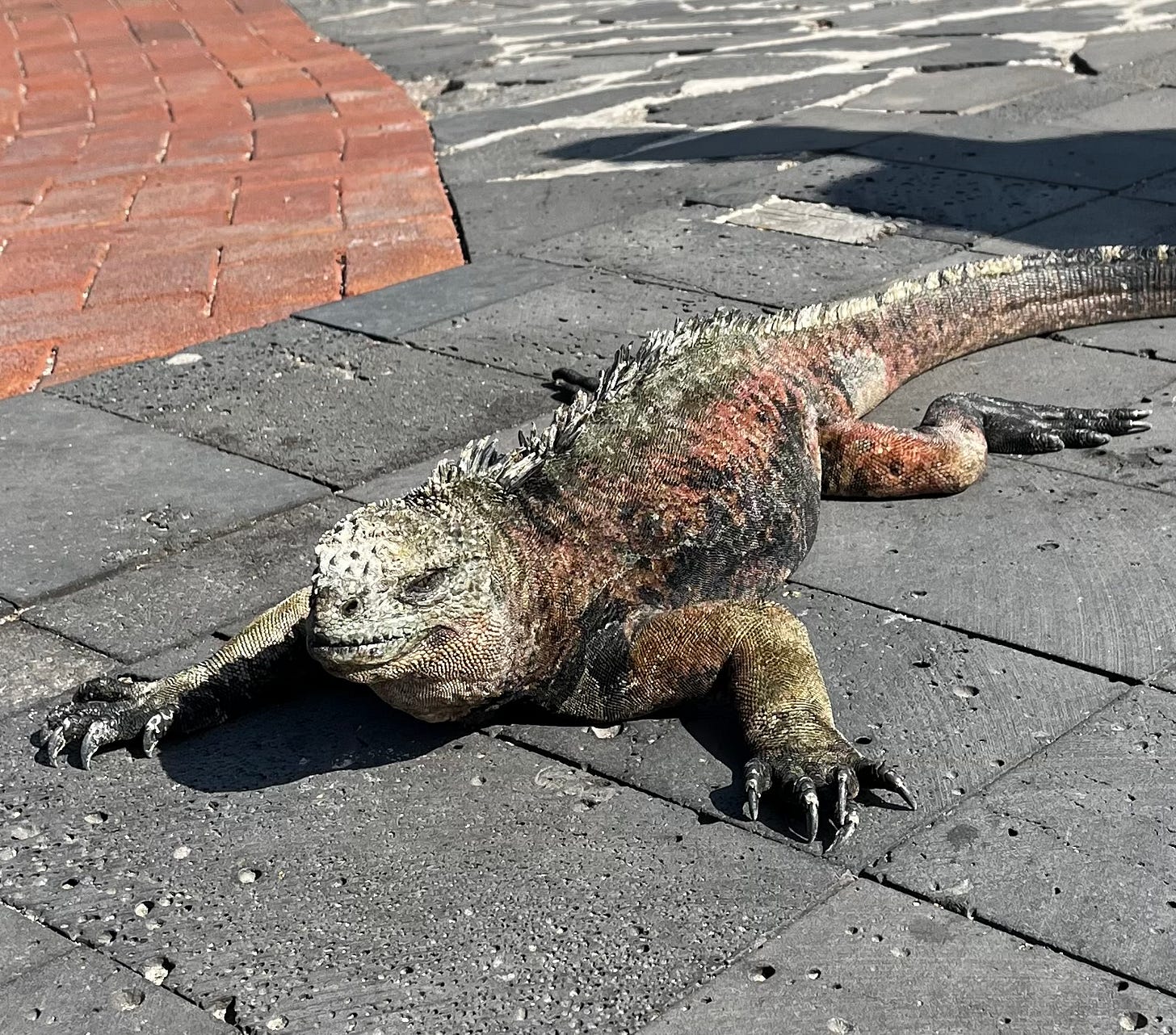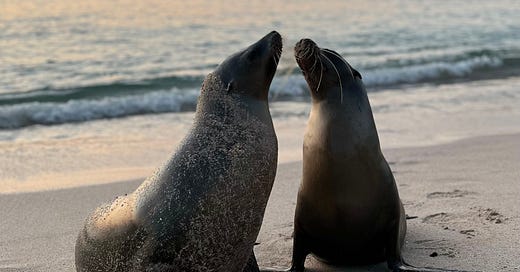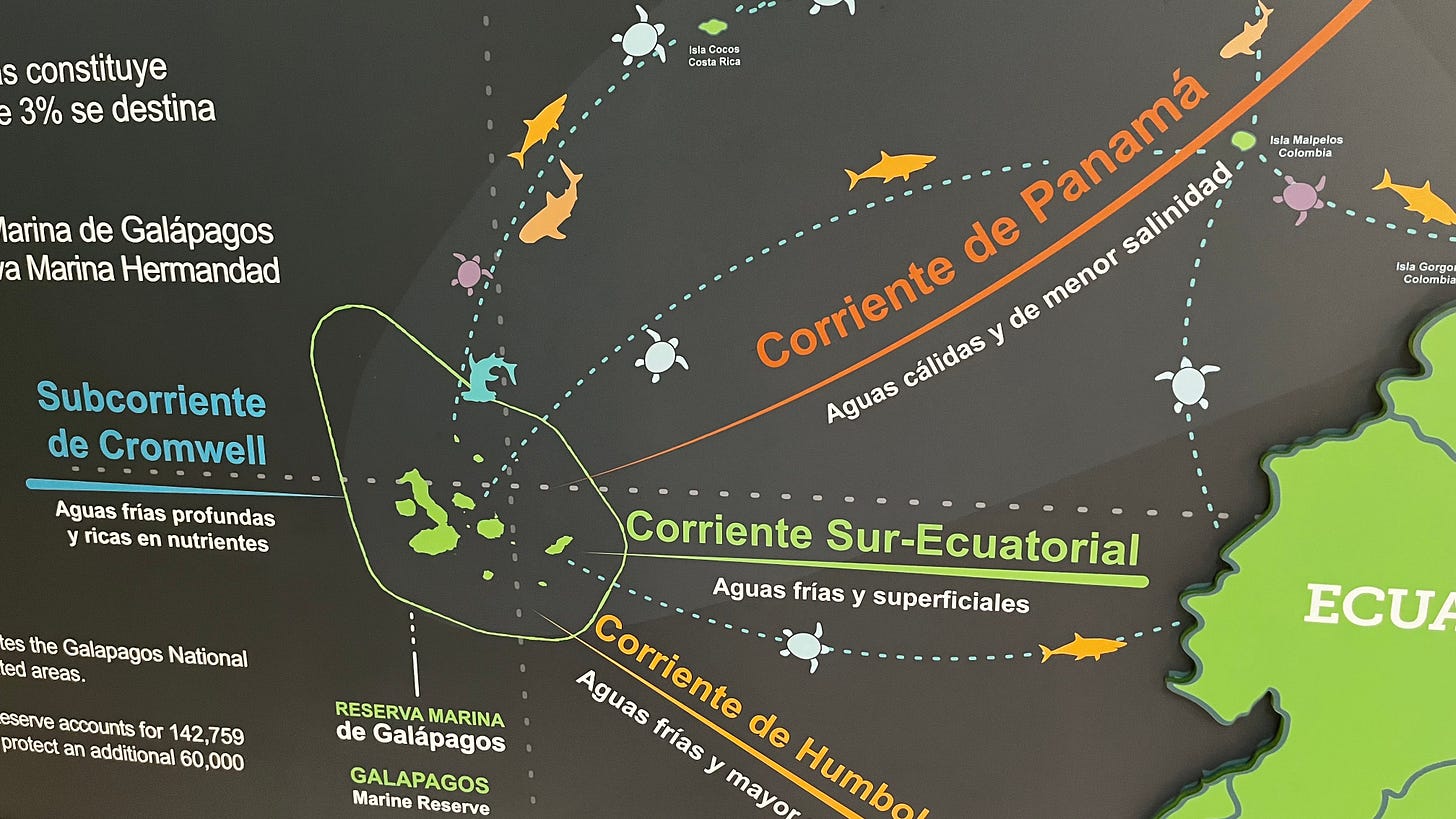# 31 Journey to the Galápagos (III): Hiking and Snorkeling
On difficult routes, meeting turtles, environmental threats, and paid tours
This is Journey to the Galápagos Episode III. In case you missed the previous episodes, here are Episode I and Episode II.
This post is for paid subscribers. If you’d like to read it in full, you’ll need to upgrade to a paid subscription. Each month or so, I will publish an essay exclusively for those who financially support my writing.
Hiking more than we bargained for
On our third day on San Cristóbal, we head for Playa Baquerizo, a beach we can reach on a 3 km trail (1.8 miles). The route takes us over a hill toward the coast, so I estimate it will take us one hour to get there and one hour back. We bring plenty of water, peanuts, and our snorkeling gear, because there are no tourist facilities on the beach, just unspoiled wildness.
The trail starts at the Interpretation Center, the island’s free Natural and History Museum. Before we set off, we read up on San Cristóbal’s geological formation (volcanos galore), its human history (pirates!), and all its endemic species, among which the marine iguana.
Marine Iguanas
Average lifespan: 5-12 years
Average size: 0.7 m (2,2 ft) with a max of 1.5 m (5 ft)
Average weight: 1,5 kg (3,3 lbs)
Interesting facts: Marine iguanas have a pigment in their blood that allows them to hold more oxygen. They can stay below the surface for an hour. Because they consume so much salt, marine iguanas can filter their blood in their nose and sneeze out the excess salt. They often have salt-crystal mustaches.

We checkin in with the park ranger by writing down our names and where we’re lodged. Will they come search for us if we don’t return? Probably not, because signing out isn’t necessary. Maybe they just want to keep track of who’s using the trails and when. My Spanish isn’t yet good enough to ask.
On paved paths and wooden stairs, we climb to the lookout point Cerro Tijeretas, where the previous day we noticed the existence of this trail to Playa Baquerizo. The route from here descends on gravelly earth. We don’t have decent hiking boots—which I recommend for a visit to the Galápagos Islands—so we must be careful not to slip.
Soon, the path disappears and is replaced by sharp lava boulders. With hand and feet, we climb, going up, going down, going sideways like crabs.
The route is more difficult than I anticipated. The direction is well indicated, though, so there’s little chance of getting lost. It’s just not easy to keep our balance with our stuffed backpacks, and the afternoon heat on our heads. Are we there yet? Red-throated lava lizards shoot away from us like arrows.
Several times, we’re tempted to turn around. We should have been there by now. If we want to return before dark, and we seriously do, we won’t have much time left on the beach. Still, we persist—we take pride in being stubborn and the coast appears so close: We can already hear the ocean.
We get to the beach after 90 minutes, hot and exhausted. I make a beeline for the water to cool my feet and, thanks to my wonderful blood circulation, the rest of me.
There are more marine iguanas on the sand than people, about 30 against 3. On the black rocks, red Sally Lightfoot crabs scurry as though they own the place. I undress for a swim, but the surf is too rough here to go in deep. I study the marine iguanas instead, how they swim swiftly and dine on algae growing on underwater rocks.

The hike back is somehow less arduous, even though it’s uphill. We were probably overheated before and dehydrated, not pausing enough to drink. It also helps that we now know what to expect from the trail.
We make it back into town at sunset. Near the fishing dock, in the middle of the street, two male sea lions are fight-dancing for dominance. Except for a bored local who has seen it all before, Daniel and I are the only onlookers. I circle the pair, from a safe distance, as though I’m tracking a boxing match.
Writing this newsletter takes a lot of time. If you’re not a paid subscriber already, please consider becoming one today.
Because many of you are new here, I’m offering a special deal: You can now sign up with a 40% reduction, paying only $30 a year.
Will you join me? Click here to upgrade your subscription.
Keep reading with a 7-day free trial
Subscribe to Wander, Wonder, Write to keep reading this post and get 7 days of free access to the full post archives.






